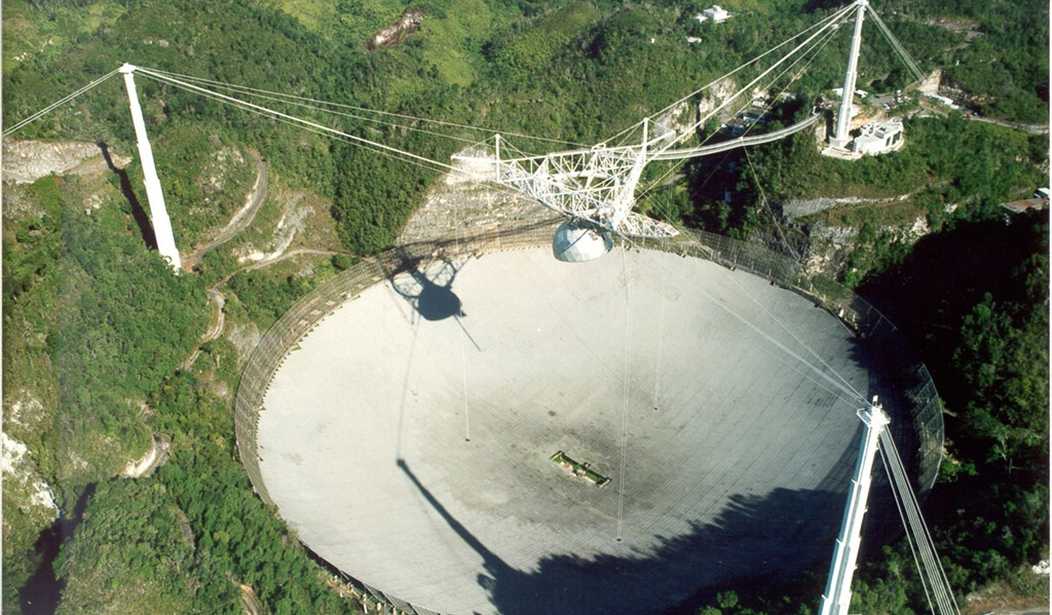Nov. 16, 1974, was a day like any other in our troubled world. The Vietnam War was raging. ABBA left for its first tour of Europe. The Republicans were reeling following the loss of four Senate seats and 45 House seats after Richard Nixon resigned in August.
For science nerds, the very first message constructed by human beings was beamed toward the globular cluster Messier 13. The Arecibo radio telescope, the largest telescope at that time, beamed a digital message of zeros and ones that If you arranged its digits in a grid, the transmission resolves into a two-dimensional image that shows what kind of creature we are and where we are in our solar system.
Today is 50th anniversary of Arecibo Message, the Earth’s First Interstellar Transmission.#arecibomessage pic.twitter.com/Z6KPw9RXxS
— takwah (@takwah) November 16, 2024
This first real attempt at "active SETI" (Search for Extraterrestrial Intelligence) where we actually reached out into the cosmos to announce our presence rather than employing "passive SETI" where we listened for signs of life was wishful thinking. The cluster is 25,000 light years from Earth.
“I think of the Arecibo message in this grand tradition of attempts at communicating with ET or transmitting things into space that are fundamentally messages, at least in part, to Earth as well,” says Rebecca Charbonneau, a science historian at the American Institute of Physics.
What made the "message" fundamentally flawed was that ET would need the ability to see, given the visual nature of the message.
“Human beings are very visual creatures, and we need something visual and beautiful to help channel feelings of spirituality and wonder,” Charbonneau says. “And I think, in some ways, the Arecibo message is an icon in that old tradition—a visual representation of something that makes us feel small in an expansive and sublime kind of way.”
The message was also an expression of hope in troubled times. But it also eventually showed us the futility and weakness of our dream. Arecibo was decommissioned in 2020 and fell into disrepair.
“Those images are seared in the mind of anybody who thinks about this stuff or is aware of the history,” says David Grinspoon, senior scientist for astrobiology strategy at NASA. “It was a very hopeful gesture, and the motivation is transcendent in that it was not for national gain or personal gain. It was like, ‘Hey, humans on Earth, we can do this.’”
However hopeful the gesture, there is a growing body of scientists who think active SETI is foolhardy. Among them was the late Stephen Hawking, who said, "If aliens visit us, the outcome would be much as when Columbus landed in America, which didn't turn out well for the Native Americans." Even if there was only a tiny chance that Hawking is right, many in the SETI community believe reaching out like we did with the Arecibo message was foolhardy.
Seth Shostak, a senior astronomer at the SETI Institute in California, disagrees with Hawking's conclusion. "This is an unwarranted fear," Shostak says. "If their interest in our planet is for something valuable that our planet has to offer, there's no particular reason to worry about them now. If they're interested in resources, they have ways of finding rocky planets that don't depend on whether we broadcast or not. They could have found us a billion years ago."
Hawking would probably respond that the chance that Shostak's way of thinking was mistaken outweighs any gain that would be realized by contact with an alien civilization.
It's all moot, of course. The Search for ET has been going on for 50 years, and while we've had some exciting moments in SETI history, we've heard nary a peep from anything or anyone who might be out there.










Join the conversation as a VIP Member